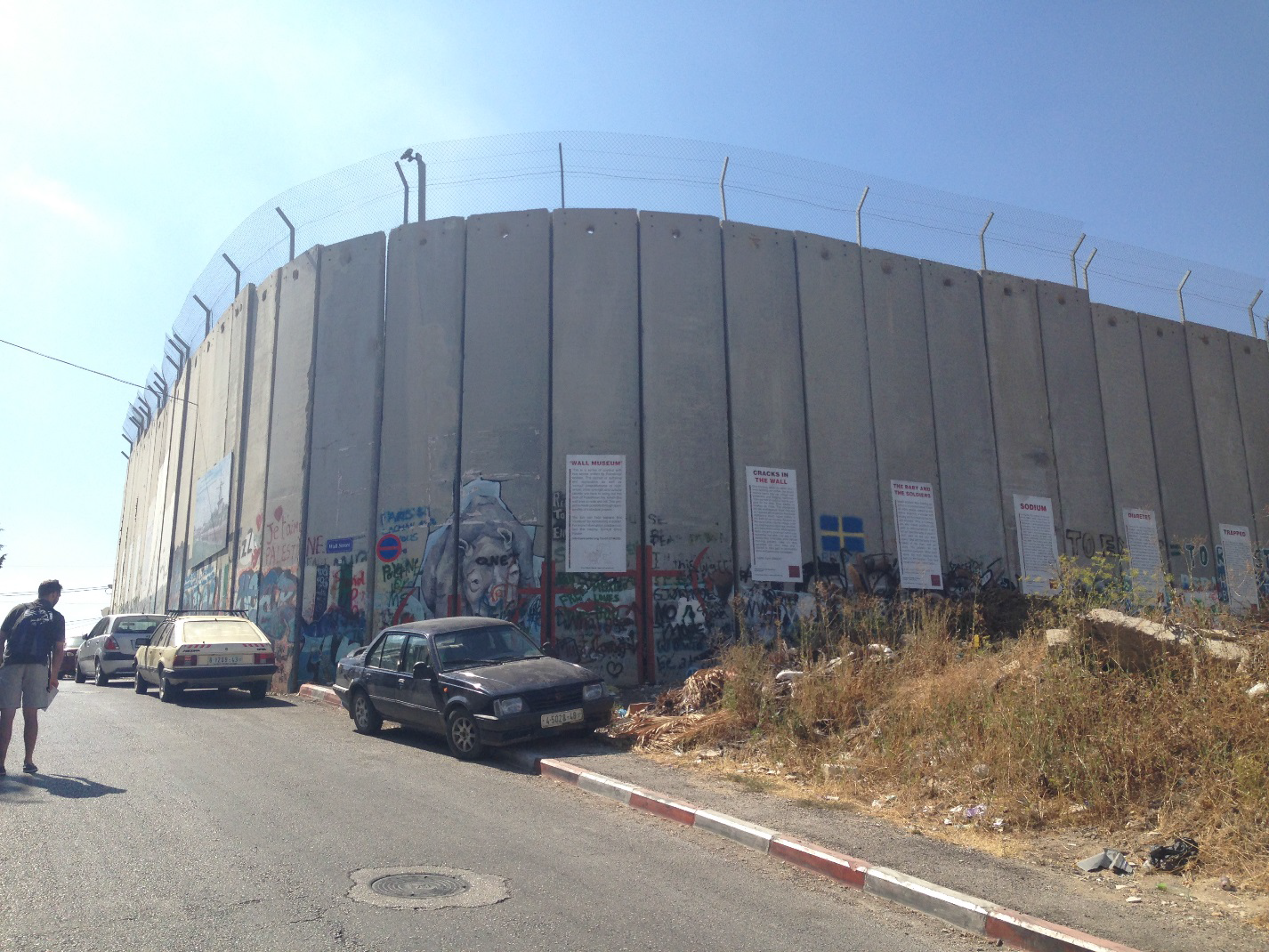
Writer-in-Residence Joan Seliger Sidney Featured in the Hartford Courant and The Whole Megillah
By Jillian Chambers
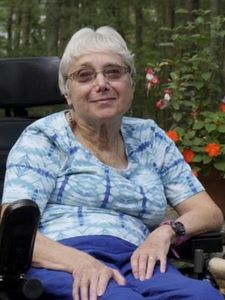
The Center for Judaic Studies Writer-in-Residence Joan Seliger Sidney was not always the prolific poet we know today. It was not until she audited a poetry class at the University of Connecticut that she began to write. As someone who lost so much through the Holocaust and has spent years living with multiple sclerosis, she brings a unique perspective to the printed page. The Hartford Courant’s Connecticut Poet’s Corner and The Whole Megillah recently highlighted Sidney and her work.
The Connecticut Poet’s Corner posted a series of Sidney’s poems focusing on her family and their hometown of Zurawno, Poland. “Inheritance” describes her mother’s memories of growing up in Zurawno so vividly that you feel at home in the one she depicts.
In “Pantoum for my Grandparents,” there is a sense of helplessness as her grandparents say “Germans, so cultured, won’t hurt us Old Jews” and refuse to flee, knowing the ultimate outcome of their choice. Despite never having the opportunity to meet them, poetry is a way for Sidney to connect to her maternal grandparents.
“On Approaching Seventy” is a piece that intertwines three generations of Sidney’s family through the making of challah. As stated in The Whole Megillah, she is particularly proud of this poem.
It is no surprise then that when asked what inspires her poetry, Sidney says “for many years my mother’s stories of growing up in Zurawno, then her three months of adventures escaping the Holocaust, became my serious topics: she really was my muse as well as helping me bear witness.” Additionally, living with multiple sclerosis has been an important topic for her to write about, as well as her family.
You can read Joan’s curated poems in the Hartford Courant here: http://www.courant.com/entertainment/arts-theater/hc-poet-joan-seliger-sidney-ct-poets-corner-20170923-story.html
Read her full interview with The Whole Megillah here: https://thewholemegillah.wordpress.com/2017/10/03/poets-notebook-joan-seliger-sidney/
Posted October 23, 2017
Backstage Tour of The Forgotten Kingdom (part 1): The Mountain Ahead Burns
Guest post by Guy Mendilow
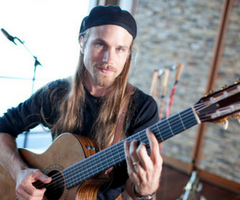 Our world is so different from the world of the former Ottoman Empire, where many of the songs on our new album, The Forgotten Kingdom, arose. Traditional contexts for singing these songs — in the home, in community events — have all but vanished thanks to wars, immigration, and massive societal changes. So how do you bring songs from long ago and far away to a modern, savvy audience?
Our world is so different from the world of the former Ottoman Empire, where many of the songs on our new album, The Forgotten Kingdom, arose. Traditional contexts for singing these songs — in the home, in community events — have all but vanished thanks to wars, immigration, and massive societal changes. So how do you bring songs from long ago and far away to a modern, savvy audience?
My colleague, Andy Reiner, said it well: There are cultural curators, whose job is to present a song in a way that captures a specific moment rooted in a particular time and place, and there are artistic creators, who create something new, based on their own experience. I think it’s fair to say we can take these as polar extremes, and that artists dealing with traditional material situate somewhere on the spectrum between them. It’s important for such artists to be up front with themselves and their audiences about their place on that spectrum. As Petrarch said, you “call a fig a fig.”
For any artist working with traditional material, knowing the tradition, knowing the history, is a basic prerequisite. If you haven’t grown up with those traditions, it’s incumbent on you to read, to watch, to listen. And there aren’t good excuses. If you cannot actually work directly with living culture bearers, you work with the next best thing: video and audio documenting those culture bearers.
And this is where I’d like to start.
The first track from The Forgotten Kingdom we’ll feature is Esta Montaña D’Enfrente (The Mountain Ahead Burns).
Here is a field recording, made in 1978, of Levi Ester, singing this song as she might have heard it in her home in Silivria, Turkey in the early 20th century.
Have a listen:
This is a good example of a fairly modern (i.e. late 19th century/early 20th century) Sephardi cantiga — a topical song dealing with popular issues like love (or in this case lost love). These songs were most often sung by women, and, as you can hear in this field recording, they were most often sung a capella. That’s not necessarily because the women who sang these songs wouldn’t have wanted an accompaniment. It’s just that they often sang them in situations where accompaniment was not practical: like in the home, while doing a bazillion different household things. You’ll notice also that the singer here is not necessarily a professional. And, for the most part, these songs weren’t sung by pros. They belonged to the community, in an intimate sort of way. This meant also that individual singers felt free to make changes to the lyrics, or to the melodies, according to their own aesthetics.
Take a look at the lyrics of this song:
Ladino
Esta muntanya d'enfrente
S'asiende i va kemando.
Ayí pedrí al mi amor,
M'asento i vo yorando.
Sekretos kero deskuvrir,
Sekretos de mi vida.
El sielo kero por papel,
La mar kero por tinta.
Los arvolés por pendolás,
Para eskrivir mis males,
No ay ken sepa mi dolor,
Ni ajenos ni parientes.
English
The mountain ahead
ignites and burns.
That’s where I lost my love
That’s where I sit and weep
There are secrets I would discover.
Secrets of my life.
I would have the sky for paper,
And the sea for ink.
The trees as my pen,
I write my suffering
I’ve suffered more than anyone can know.
Not my neighbors or my family.
_______________
And now we leave tradition. Now I put away the research. And I just gotta say: Whoa. This is no ordinary ditty. Can you imagine coming to a place in your life when these sentiments become your conviction? What brings you to such a place? What loss, what grief?
Once, in Seville, I had the good fortune of being brought to an unmarked speakeasy in the Triana neighborhood. It operated from midnight to three am. Only locals knew about it. Smoky, cluttered with old, gritty wood tables and chairs, stained floors. There were two or three guitarists. There’d be conversation and then someone would start singing, and first one and then the other guitarists would join in. The singer started seated, but, almost inevitably, the raw intensity of her singing would bring her to her feet. The atmosphere was charged, electric. The way they sang, the rhythmic clapping, the low lights — staying up all night, alone in the streets, awake, alive! This was far from the flamenco most tourists caught in the local theatre. I never found out whether these were pros or not, and I'm not sure it matters, but I can tell you that the kind of edge-of-your-seat urgency of those voices in that room struck a powerful impression.
Years later, I wanted to set this song, Esta Montaña D'Enfrente, there, with that kind of reckless careening, that kind of fire. Is it traditional Ladino? Absolutely not. But, I hope, it makes this story resonant.
You be the judge. Here is the result:
Esta Montana D’Enfrente (The Mountain Ahead Burns).
I hope you’ll enjoy.
— Guy
Posted October 22, 2017
Alumni Spotlight - Pamela Weathers - Celebrating Ten Years with the Center
By Pamela Weathers
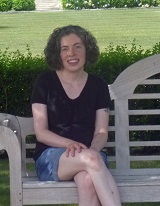 Ten years ago, in the fall of 2007, my husband, 2-year-old daughter, and I moved across the Connecticut River to be nearer Storrs campus. I was about to begin the master’s program in Judaic Studies at UConn where I hoped to pursue a PhD. At the time, I was fascinated with the Second Temple and early rabbinic periods (and still am) and had highlighted most of my copy of Sages and Commoners. Like others I would meet in my graduate student cohort, I was excited to study under its author, Professor Stuart Miller, who was noted as a premiere historian of ancient rabbinic culture and who was mentored by the illustrious Lawrence Schiffman. Dr. Schiffman, who played a part in the long awaited for publication of the Dead Sea Scrolls, was one of many guest speakers who Professor Miller brought in to speak with our small cohort. Others included James Kugel, best known for his magnum opus How to Read the Bible, and Josephus expert Tessa Rajak. As students in the Judaic Studies program, we were surrounded by eminent scholars who studied all periods of Jewish history from ancient to modern, and we benefited from their expertise. It was a thrilling time. My fellow classmates would go on to pursue further graduate study at Princeton, Yale, and Oxford Universities. I’m excited for the time when they return as guest lecturers themselves and share their own research with UConn students.
Ten years ago, in the fall of 2007, my husband, 2-year-old daughter, and I moved across the Connecticut River to be nearer Storrs campus. I was about to begin the master’s program in Judaic Studies at UConn where I hoped to pursue a PhD. At the time, I was fascinated with the Second Temple and early rabbinic periods (and still am) and had highlighted most of my copy of Sages and Commoners. Like others I would meet in my graduate student cohort, I was excited to study under its author, Professor Stuart Miller, who was noted as a premiere historian of ancient rabbinic culture and who was mentored by the illustrious Lawrence Schiffman. Dr. Schiffman, who played a part in the long awaited for publication of the Dead Sea Scrolls, was one of many guest speakers who Professor Miller brought in to speak with our small cohort. Others included James Kugel, best known for his magnum opus How to Read the Bible, and Josephus expert Tessa Rajak. As students in the Judaic Studies program, we were surrounded by eminent scholars who studied all periods of Jewish history from ancient to modern, and we benefited from their expertise. It was a thrilling time. My fellow classmates would go on to pursue further graduate study at Princeton, Yale, and Oxford Universities. I’m excited for the time when they return as guest lecturers themselves and share their own research with UConn students.
It would take me six years before I finished the master’s program. During that time, I had the privilege of helping students as Professor Miller’s graduate assistant and later, as Professor Arnold Dashefsky’s assistant, I developed a passion for the study of modern Jewry and a deep interest in Holocaust studies and antisemitism. At the end of my graduate school career, Professor Dashefsky had taken on the co-editorship of the 108-year-old American Jewish Year Book, an annually published volume of topical articles and resource information on the Jewish communities in North America. I began work on this project by assisting in the research and, after graduation, continued on as the editorial assistant for the iconic publication, a position I hold today.
Six years of graduate study is a long time. Long enough time for my son to be born and for me to go through treatment for breast cancer. It was during the recovery of this disease that I realized specialized study in graduate school that would lead to the PhD would mean hours away from my young children. I wanted to watch them grow, and I wanted to put family life first. That’s when I, again, turned to the Center for Judaic Studies. I was looking for meaningful work, and the Center’s mission to promote the academic and scholarly study of Jewish history, culture, and civilization to a wide audience and to grow their student engagement resonated with me.
My goal during my time working at the Center has been to create greater visibility for its programs and resources. I want everyone to know about the compelling research and study being undertaken by the faculty in Jewish studies and about the outstanding guest speakers and cultural programs that we sponsor. I started by designing their website and making available as much information as possible on our programs, faculty, students, and resources. I created the Recap Page so those who missed out on our events could get a feel for what they might have gained from being there. I established the monthly newsletter to keep people informed on all the great work that goes on at the Center and the many accomplishments of our faculty. I’ve developed promotional procedures for our programming and courses and had the campus papered with our new course flyers.
I never thought graphic design, website management, or marketing strategies would be aspects that I would learn and develop in my professional life, but I have discovered that it is not simply the study of Jewish history and culture that could be so fulfilling to me. It is the ability to share that passion in Jewish studies and to help foster its growth that is what’s meaningful. It has been a truly rewarding experience to be a part of the Center’s invaluable mission to connect the campus community with Jewish studies and culture.
Posted August 25, 2017
Alumni Spotlight – Ted Lopatin
By Ted Lopatin
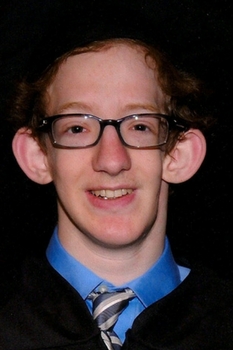 I entered UConn as an undergraduate intending to major in Spanish with a minor in Judaic Studies. But after taking only a couple of courses with Professor Miller and Sherry Shamash, I found them so informative, substantive and fascinating that I decided to pursue a double major instead. UConn only offered a minor in Judaic Studies, forcing me to do an individualized major; a long bureaucratic process, but one that, in my case, was well worth it.
I entered UConn as an undergraduate intending to major in Spanish with a minor in Judaic Studies. But after taking only a couple of courses with Professor Miller and Sherry Shamash, I found them so informative, substantive and fascinating that I decided to pursue a double major instead. UConn only offered a minor in Judaic Studies, forcing me to do an individualized major; a long bureaucratic process, but one that, in my case, was well worth it.
While my interest in Judaic Studies and Hebrew stems from the fact that I am Jewish, I think that even if one is not of the Jewish faith, that any student who loves history and languages, and who wishes to acquire a thorough appreciation of the world’s oldest monotheistic people and their journey through time, would greatly appreciate the wealth of knowledge that comes from taking these courses that UConn has to offer.
While there may have been new additions to the faculty since I graduated, I remember the Judaic Studies program being wonderfully structured, with Professor Miller covering ancient history, Professor Einbinder covering medieval history, and Professor Shoulson covering early modern and modern history. I had the pleasure of taking courses with each of them and was amazed to discover just how ignorant I had been of my own people, our history, and how much I still had to learn. I acquired so much knowledge of Jewish history from ancient times to the present, in addition to learning about the various civilizations under which Jews have lived while in the Diaspora, from the Greeks, Romans and Egyptians, to the worlds of Christendom and Islam.
As far as Hebrew is concerned, Sherry Shamash is not only a great language instructor, but one of the most delightful and remarkable people whom I had the pleasure of befriending while at UConn. With her vivacious and personable spirit, she has a way of drawing students in (including those who are not Jewish) and stimulating their interest by intertwining her knowledge of the Hebrew language with her knowledge of Israel and Judaism in general.
For many students at UConn, college means taking lots of large classes taught by teaching assistants, who, while very hard-working, simply do not possess the same wealth of knowledge and expertise that lifelong academics have to offer. Whenever I took a Judaic Studies course, I always felt like I was being taught, not by someone who was simply being paid to teach a course, but by someone who was an established scholar in that field and whose passion for it was palpable. It was a real privilege to sit and listen to their lectures, as I knew that I was getting a real education.
While I have ultimately chosen to pursue a career involving my other major, Spanish, I am so glad that I made the decision to also major in Judaic Studies because it taught me the joy and satisfaction that can come from learning for its own sake.
Posted April 20, 2017
Alumni Spotlight - Marilyn Simon Rothstein
By Jillian Chambers
 Recent graduate of the Judaic Studies MA program at the University of Connecticut, Marilyn Simon Rothstein, has published her first novel, Lift and Separate, as reported by the Connecticut Jewish Ledger. The novel follows Marcy Hammer, a woman finding her way after her husband, the head of a global bra company, left her for a lingerie model. Over the course of the novel, Marcy refuses to fall apart even in the face of newly revealed secrets by her family and friends. Marcy handles all of her setbacks while still finding the humor in her heartbreak.
Recent graduate of the Judaic Studies MA program at the University of Connecticut, Marilyn Simon Rothstein, has published her first novel, Lift and Separate, as reported by the Connecticut Jewish Ledger. The novel follows Marcy Hammer, a woman finding her way after her husband, the head of a global bra company, left her for a lingerie model. Over the course of the novel, Marcy refuses to fall apart even in the face of newly revealed secrets by her family and friends. Marcy handles all of her setbacks while still finding the humor in her heartbreak.
Rothstein, a 63-year-old Avon resident and grandmother of three is fulfilling a life-long dream after earning a journalism degree from New York University, working for Seventeen magazine, and finally launching and running an advertising agency for the last 25 years. Rothstein wrote a novel instead of a thesis while completing a master of arts in liberal studies at Wesleyan University; however she was not able to have it published. While that novel did not come to fruition, Rothstein's Lift and Separate manuscript has led to a two book deal with Lake Union Publishing; a second book is scheduled for release in January 2018.
Rothstein is also heavily involved with the West Hartford Jewish community. She was the past president of the board of Yachad Greater Hartford Community High School (which is now the Jewish Teen Learning Connection), as well as an advisor to the United Synagogue Youth group at Beth El Temple in West Hartford. Both of Rothstein's daughters, Sharyn and Marisa, have carried on her legacy and served as past presidents of the Beth El Temple United Synagogue Youth group.
We congratulate Marilyn Simon Rothstein on her accomplishment and look forward to more novels in the coming years! The original article featured in this story can be found here.
Posted January 4, 2017
Catastrophe and its Consequences
By Pamela Weathers
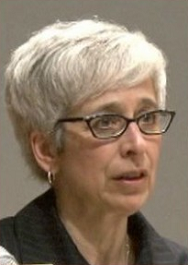 Susan Einbinder, professor of Hebrew and Judaic Studies and Comparative Literature, has devoted most of her work to the study of catastrophe. Professor Einbinder, a leading scholar on medieval French Jewish literature, is the author of two monographs on medieval French Jews, Beautiful Death: Jewish Poetry and Martyrdom from Medieval France (Princeton 2002) and No Place of Rest: Literature, Expulsion and the Memory of Medieval France (Philadelphia 2008). In these works, she has documented, through the examination of a variety of literary sources from gravestones to laments, Jewish response to the traumatic experiences of expulsion, persecution, and martyrdom that occurred throughout the Middle Ages. In her most recent work, which focuses on Provence and Iberia, Professor Einbinder questions whether those in the past experienced trauma the way people do today or if what we conceive of as trauma is a modern, western construct.
Susan Einbinder, professor of Hebrew and Judaic Studies and Comparative Literature, has devoted most of her work to the study of catastrophe. Professor Einbinder, a leading scholar on medieval French Jewish literature, is the author of two monographs on medieval French Jews, Beautiful Death: Jewish Poetry and Martyrdom from Medieval France (Princeton 2002) and No Place of Rest: Literature, Expulsion and the Memory of Medieval France (Philadelphia 2008). In these works, she has documented, through the examination of a variety of literary sources from gravestones to laments, Jewish response to the traumatic experiences of expulsion, persecution, and martyrdom that occurred throughout the Middle Ages. In her most recent work, which focuses on Provence and Iberia, Professor Einbinder questions whether those in the past experienced trauma the way people do today or if what we conceive of as trauma is a modern, western construct.
During Professor Einbinder’s year as a fellow for the 2015-2016 academic year with the University of Connecticut Humanities Institute, she drafted the chapters of what will become her latest monograph, a study of Jewish responses to the Black Death in Iberia and Provence. The book emerges as an expansion of a chapter dealing with the subject in her previous work, No Place of Rest; and her textual materials come from a variety of genres and sources, including laments, gravestone epitaphs, medical literature, and forensic archaeology.
Why study the “century of catastrophe,” as the 14th century is known, marked by the Black Death which was responsible for the destruction of 30-60 percent of the population of Europe? Einbinder explains that learning about Jewish responses to the Black Death provides a better understanding of both the Jewish communities that were affected throughout Europe as well as the broader communities’ responses to their Jewish neighbors. Depending on the severity of the plague in various locales, responses could range from peaceful cohabitation to violent persecution.
The initial outbreak of the Black Death occurred in Europe in 1348 with subsequent waves occurring until the end of the 1800s. The plague was spread by infected fleas transported by rats and other rodents. The lethal bacteria was responsible for a devastating and swift mortality rate among Europeans whose rapid population loss resulted in major economic, social, and political upheaval, challenging the limits of scientific knowledge and impacting social and humanitarian policy as well as religious thinking.
Today’s research in medieval science and medicine has embraced both a scientific and humanities approach to the study of the Black Death, and recent research in 2010 was able to isolate from the skeletal remains in mass graves DNA evidence of the bacteria Yersinia pestis, the bacteria responsible for bubonic plague, which many scholars had long suspected was the cause of the Black Death. This corroborative evidence on the source of the Black Death from the scientific community is of particular interest to Professor Einbinder because scientific study of the remains of plague victims can now establish as fact what couldn’t be known with certainty before.
As she studies the medical tractates of the fourteenth century, Professor Einbinder finds record of a community of physicians who continued to treat plague victims while often acknowledging their powerlessness in the face of the mysterious pandemic. Knowledge of disease spread was unknown to these scientists and thinkers, and the lack of such knowledge sometimes led to scapegoating. Thousands of Jews were murdered when Europeans became suspicious that Jews were intentionally poisoning wells to spread the disease. Thus, the catastrophe for Jews in the 14th century was not limited to contracting the Black Death but also to being held responsible for it.
Professor Einbinder’s research extends beyond the literature of the period to the evidence found at mass graves where Jewish victims of persecution can be found. According to Einbinder, the weapons used, based on the wounds received by the victims, are not limited to those that would be found in a peasant mob but also include swords, indicating that frenzied peasant mobs alone were not responsible for the massacres. By examining the perpetrators of violence against Jews, their motives and relationships to Jews in the area, Professor Einbinder hopes to shed light on the psychology of these individuals, thereby shedding light on analogous instances in the modern world where scapegoating, bias, and fear are also present during times of catastrophe.
Professor Einbinder has been the recipient of fellowships from the Guggenheim Foundation, the Institute for Advanced Studies, the NY Public Library’s Cullman Center for Scholars & Writers, and the National Humanities Center. We look forward to learning more about her fascinating research!
Posted January 5, 2017
Center's Road Show Inspires Judaic Studies Outreach Across the Nation
By Jillian Chambers
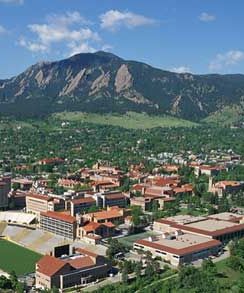
In a time of uncertainty for Judaic studies initiatives across the country, the Center for Judaic Studies and Contemporary Jewish Life’s Road Show program allows us to share with the community current scholarship Jewish history, culture, and literature. The Center’s world-class faculty present on a wide variety of topics such as Jewish culture in other regions, the Holocaust, Arab-Israeli politics, and representations of Jews in the works of Shakespeare. The Road Show has been so successful that it has inspired a similar program in Colorado.
The University of Colorado Boulder (CU Boulder) debuted its Peak to Peak lecture series this year, sponsored in part by CU Boulder’s Program in Jewish Studies and the Office for Outreach and Engagement’s Arts and Humanities Initiative. While Connecticut’s population density enables the Center to bring the Road Show to the surrounding community more easily, the Peak to Peak program brings Jewish outreach to places hundreds of miles from CU Boulder’s campus. You can learn more about the Peak to Peak program on CU Boulder's website here.
Nan Goodman, Director of CU Boulder’s Program in Jewish Studies and founder of the Peak to Peak program, presented “False Jewish Messiah or Puritan Hero?” in Trinidad, Colorado, almost 225 miles from the Boulder campus. This presentation was the final event for Colorado’s oldest synagogue, Temple Aaron. Built in 1883, it was sold because of Trinidad’s dwindling Jewish population and an inability to maintain the aging building. While the doors of Temple Aaron may be closing, the Peak to Peak program is opening the doors to Judaic studies all around Colorado.
Both of these programs have proved successful in providing their respective communities with educational opportunities in Judaic studies that they might not otherwise get to experience. For more information about the presenters and topics of the Center’s Road Show programming, please visit our Road Show page or contact the Center at 860-486-2271.
Posted January 4, 2017
Holocaust Memorial Exhibit Relocates to the University of Hartford
By Jillian Chambers

After 25 years at the Mandell JCC of Greater Hartford, a Holocaust memorial exhibit is moving to the University of Hartford thanks to efforts by Mandell JCC executive director David Jacobs, Jewish Historical Society of Greater Hartford executive director Estelle Kafer, and Professor of Modern Jewish History and Director of the Museum of Jewish Civilization Avinoam Patt.
The Museum for Jewish Civilization at the University of Hartford will become the new home for the Holocaust memorial exhibit. It contains descriptions of Jewish life in Europe pre-World War II, during the Holocaust and after the war. There is also a display of artifacts and documents provided by local survivors who settled in Hartford. According to the Connecticut Jewish Ledger article "Hartford Remembers the Holocaust," school groups often visited the room, where they had the opportunity to meet with survivors. Some artifacts and documents were returned to the survivors and their descendants, but the rest was incorporated into a new exhibit titled "Hartford Remembers the Holocaust."
The new exhibit opened at the Greenberg Center's annual Holocaust Educators Workshop on Oct. 31, guided by the theme "Teach for the Future: Holocaust Education in the 21st Century." The workshop featured a panel discussion of six Greater-Hartford survivors, who are also very involved in local Holocaust education. In the near feature, the exhibit will feature video testimonies from survivors who came to the community but are no longer with us. Most of these video testimonies are from the Fortunoff Video Archive for Holocaust Testimonies at Yale University.
Professor Patt told the Jewish Ledger that this exhibit will allow them to "provide the local connection for students and community members to understand that this is not just something that happened long ago in a faraway place, but still continues to have an impact on people who live in our community and on their descendants - who are committed to teaching about the Holocaust to make sure that it never happens again."
A project titled "In Their Own Words" featuring interactive videos conducted by the Greenberg Center and Voices of Hope will also be incorporated into the exhibit. The opening of "Hartford Remembers the Holocaust" was on Wednesday, November 9 at the Museum of Jewish Civilization at the University of Hartford. The original article featured in this story can be found here.
Posted November 28, 2016
Center Director Jeffrey Shoulson Reflects on Bob Dylan's Nobel Prize
By Jillian Chambers

The 2016 Nobel Prize in Literature, to the surprise of many, was awarded to the singer-songwriter Bob Dylan for "having created new poetic expressions within the great American song tradition." Center Director Jeffrey Shoulson was recently featured on Trash Flow Radio, a radio program in Cincinnati, to discuss the implications of, and fallout over, the Swedish Academy's decision to award the prize to Dylan.
Professor Shoulson began by explaining that there have been two general reactions in the world of literature, both on the extreme side of the spectrum: those who are thrilled and those that are disappointed. Especially in the age of social media, response has been swift and decisive. Shoulson recalled how he found out: a friend messaged him saying "Dylan WTF?" and, not having heard the news himself, he thought that Bob Dylan had died until he checked Facebook.
There have been many objections to awarding Dylan the Prize, the most common being that popular music is not legitimate enough for a Nobel Prize in literature. Shoulson found fault with this objection, arguing that if other forms of writing can be recognized, so should music. He also commented on the influence of Bob Dylan and the debate over measuring the quality of literature. Should the measure of the quality of the literature be independent of its influence? Is influence even relevant? Shoulson said that, in his estimation, easily two thirds of the people who had been given the award have had significantly less influence than Dylan and are not nearly as well known. At the same time, there are also writers who, despite their extensive influence and literary importance, never received the Prize.
Another objection raised by the radio host during the interview was that songwriting is different than prose or poetry because the lyrics of a song cannot be separated from the music. In choosing Dylan, Shoulson argued, the Academy has signaled that it is going to be more expansive in what and whom it considers literary. Dylan's prize is also an acknowledgement of poetry's roots. Before it was ever written down, poetry was sung; the term "lyrics poetry" takes it name more a musical instrument, the lyre, which was the standard ancient accompaniment to poetry, not at all unlike the acoustic guitar Dylan strums when he sings.
In addition to the last two objections, people have taken issue with Dylan's plagiarism. Shoulson offered the counterargument by saying that Dylan's work does not diminish what he borrowed, rather he "refined and raised it to the level of brilliance that we associate with Dylan's music." Shoulson added that this is a common feature of the folk tradition, and the literature Prize to Dylan is a recognition of the American folk tradition.
Shoulson and the radio host also discussed Dylan's religion Dylan was born Jewish but converted to Christianity in the late 1970s. Some people have protested Dylan receiving the award by arguing that if the Academy was going to choose a Jewish American writer, it should have chosen someone like Philip Roth. Shoulson countered both Dylan and Roth have notoriously fraught relations with their Jewish roots.
Posted November 16, 2016
News from Israel Academic Travel Award Winners
The three winners of the 2015 Israel Academic Travel Awards, sponsored by Global Affairs, Judaic Studies, and Middle East Studies, share a summary of their experiences traveling in Israel this past summer.
Alexandra Liner, a speech language and hearing science major and psychology minor, spent the summer abroad with Onward Israel, volunteering at Yachdav Women's Shelter, a shelter for women and children who have experienced and escaped domestic violence.
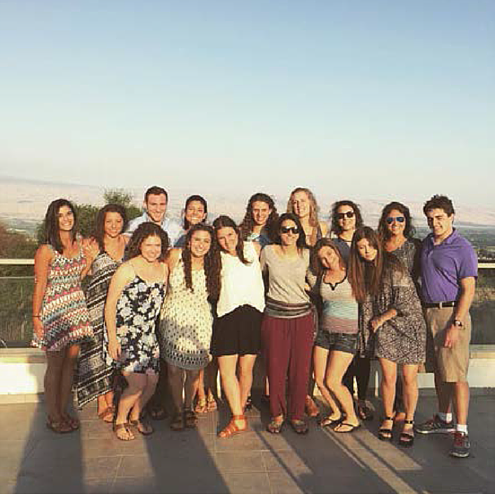
I spent two months in Israel this past summer, participating in two very different programs. The first program was a six-week long service learning program called the Negev Service Corps. This program included volunteer service to local organizations in the old city of Be’er Sheva as well as learning more about the diversity of Israel and minority communities. Specifically, I volunteered at a placement for children recovering from drug and alcohol abuse with one other girl from the trip. Each of us volunteered four days a week and then traveled all over Israel to visit and learn more about minority communities. Some examples of things we did were being hosted overnight by Druze families, visiting many different Bedouin villages, learning about the culture of the Black Hebrews, and being exposed to the issues of African refugees living in southern Tel Aviv.
There were 15 participants on this program and we lived in two separate apartments in the same complex alongside local Israelis. The group became extremely close-knit in a surprisingly short amount of time, and I have met some of the most amazing people after completing this program. After the Negev Service Corps, I was part of a program called Israel 2.0. This was a two-week program filled with touring, exploring, and Jewish learning. I was the youngest participant in this program, there were 24 others all in their mid-twenties or early thirties, and each of us had very different Jewish backgrounds and upbringings, so it was very interesting to hear different opinions and thought processes about the things we were learning. We did many interesting things on this program, such as touring the underground tunnels beneath the Kotel, visiting the Knesset, hiking in the desert, and much more.
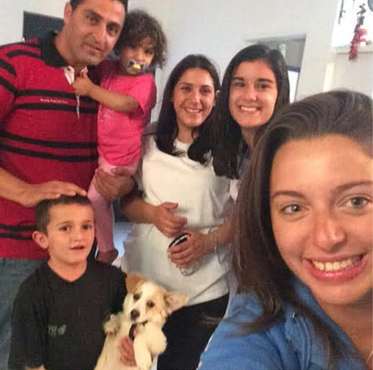
Spending my summer in Israel has been the best decision of my life, and it has changed me and shaped me into a better person than I was before. I realized how important it is for me to hold Judaism close to my heart, and I have a much deeper appreciation for Jewish history. After coming back to school, I try my hardest to keep some traditions such as lighting Shabbat candles, attending Shabbat dinners at Hillel, as well as consciously trying to improve myself every day.
Thank you so much to the Center for Judaic Studies for allowing me to have this once in a life time experience.


Ryan Norton, a double major in political science and human rights and minor in history, used his travel award to attend the University of Haifa International School this past summer.
There is no way I could possibly hope to describe everything I saw and thought during my time in Israel this summer. My original plan to spend two months in Haifa studying Hebrew was edited at the last minute to just one month, trading the second month for a slightly earlier arrival in Israel. I spent about a week enjoying the modern city of Tel Aviv before going to Jerusalem where I took day tours of the West Bank. I found myself in places I never thought I would be able to see and where it is illegal for Israelis to go. I had a great time, thanks to my two tour guides, one Christian and one Muslim, who grew up side by side in the Bethlehem suburb of Beyt Sahour. The week of tours took me to Bethlehem, Nablus, Hebron, and Ramallah. The former three are all mentioned in the Hebrew Bible, and there is an authenticity about these cities that no other place in Israel quite manages to capture. At the same time, these tours had a focus of explaining the Israeli-Palestinian conflict from the other side. The convergence of the two made for one of the most eye opening experiences of my life.
For the safety of the IDF soldiers, this guard tower is no longer manned.
Before we went to Nablus I got to meet the cousin of the Samaritan High Priest, who lives in a village just outside of Nablus. Yes, as in “The Good Samaritan”. There are barely over a thousand of them left, but they can trace the priestly lineage back for thousands of years. Jesus’ lifetime coincided with the 74th 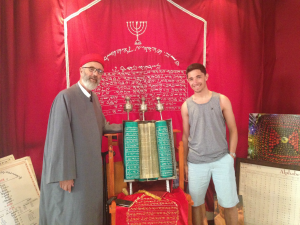 Samaritan High Priest. The Samaritans are very similar to the Jews but thousands of years of divergence shows. They have the menorah with 7 candles and they have the Torah, but their Torah is a bit different. Aside from the few hundred grammatical differences, it’s also written in a derivative close to ancient Hebrew. The Samaritans speak and pray in ancient Hebrew during holidays. Their day-to-day tongue is Arabic. Interesting fact about these guys, they don’t believe that Mount Moriah, the site of the Al-Aqsa Mosque and the Western Wall, is the correct mountain. They think it’s a hill right across from their village. Today, Jews do not perform the ritual sacrifice of animals because the ritual requires the Temple, which must be built on the site of the Temple Mount, where the Dome of the Rock sits. The Samaritans have their mountain, and they perform animal sacrifices on an annual basis every year on Passover. Another fun fact, the Samaritans are the only group to have citizenship from Israel, Palestine, and Jordan; and they were the only West Bank Palestinians who were allowed to retain their Jordanian Passports after Jordan lost control of the West Bank in 1967.
Samaritan High Priest. The Samaritans are very similar to the Jews but thousands of years of divergence shows. They have the menorah with 7 candles and they have the Torah, but their Torah is a bit different. Aside from the few hundred grammatical differences, it’s also written in a derivative close to ancient Hebrew. The Samaritans speak and pray in ancient Hebrew during holidays. Their day-to-day tongue is Arabic. Interesting fact about these guys, they don’t believe that Mount Moriah, the site of the Al-Aqsa Mosque and the Western Wall, is the correct mountain. They think it’s a hill right across from their village. Today, Jews do not perform the ritual sacrifice of animals because the ritual requires the Temple, which must be built on the site of the Temple Mount, where the Dome of the Rock sits. The Samaritans have their mountain, and they perform animal sacrifices on an annual basis every year on Passover. Another fun fact, the Samaritans are the only group to have citizenship from Israel, Palestine, and Jordan; and they were the only West Bank Palestinians who were allowed to retain their Jordanian Passports after Jordan lost control of the West Bank in 1967.
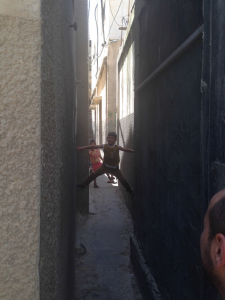 Nablus, on the other hand, gets very little tourism. This is a picture of an eight year-old boy in Balata Refugee Camp. The average age there is around 15. The whole camp is 1km2 but upwards of 20,000 people live there. This is what the streets look like. No urban planning whatsoever. As the houses get bigger, the streets get smaller. You can actually see the density of this camp if you looked at a satellite view on Google Maps. A few hours after I left this spot, the IDF, by request of the Palestinian Authority, raided Nablus and arrested 40 members of the Hamas terrorist group who were in the process of planning a coup to overthrow the Palestinian Authority.
Nablus, on the other hand, gets very little tourism. This is a picture of an eight year-old boy in Balata Refugee Camp. The average age there is around 15. The whole camp is 1km2 but upwards of 20,000 people live there. This is what the streets look like. No urban planning whatsoever. As the houses get bigger, the streets get smaller. You can actually see the density of this camp if you looked at a satellite view on Google Maps. A few hours after I left this spot, the IDF, by request of the Palestinian Authority, raided Nablus and arrested 40 members of the Hamas terrorist group who were in the process of planning a coup to overthrow the Palestinian Authority.
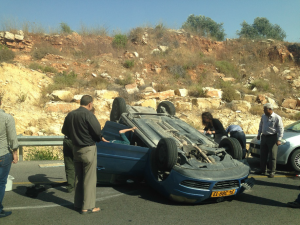 On our way home from Nablus we passed by this car accident. Somebody was stuck in the car. The orange plate signifies this is a car of an Israeli settler. Shown in the picture are Palestinians who stopped
On our way home from Nablus we passed by this car accident. Somebody was stuck in the car. The orange plate signifies this is a car of an Israeli settler. Shown in the picture are Palestinians who stopped
their own vehicles to help out.
There are hundreds more pictures where these came from, each of which have their own story that opened my eyes up to a side of Israel/Palestine that one simply cannot get by reading the news. I highly encourage anyone who is planning to go to Israel to look into Green Olive Tours. They do an amazing job.
Carsten Witt, a Ph.D. Candidate who attended an intensive Hebrew Summer Ulpan Program at Haifa University and conducted research in Tel Aviv to advance his dissertation on German Jewish constructions of space.
I participated in the Hebrew Summer Ulpan at Haifa University. The Ulpan offers 25 contact hours of Hebrew instruction with accompanying tutoring. Every week there were two trips allowing us to explore the history of ancient and contemporary Israel. In the first week, we went to see Haifa and the Bahá'i Gardens. During week two, we went to Nazareth and Jerusalem. On both tours we were accompanied by professional tour guides providing in depth information about the places we visited. In the last week, we explored Akko and the Grotto Caves, which are naturally formed cave formations.
In sum, the excursion provided the opportunity to connect specific knowledge of this geographic region with world history events such as the spread of Christianity or the Crusades. Visiting the sites and seeing the architectural representations of those historic events, or the retrospective constructions of those stories, do form a mnemonic web. Israel is clearly well suited in meeting students hungry for historical and cultural knowledge. The Israel Travel Award granted by the Judaic Studies Department has allowed me to explore the region, advance my language skills, and cultivate an eagerness for more exploration.
I am grateful to have received the award and hope that in the coming years other students will also get a chance to receive it.
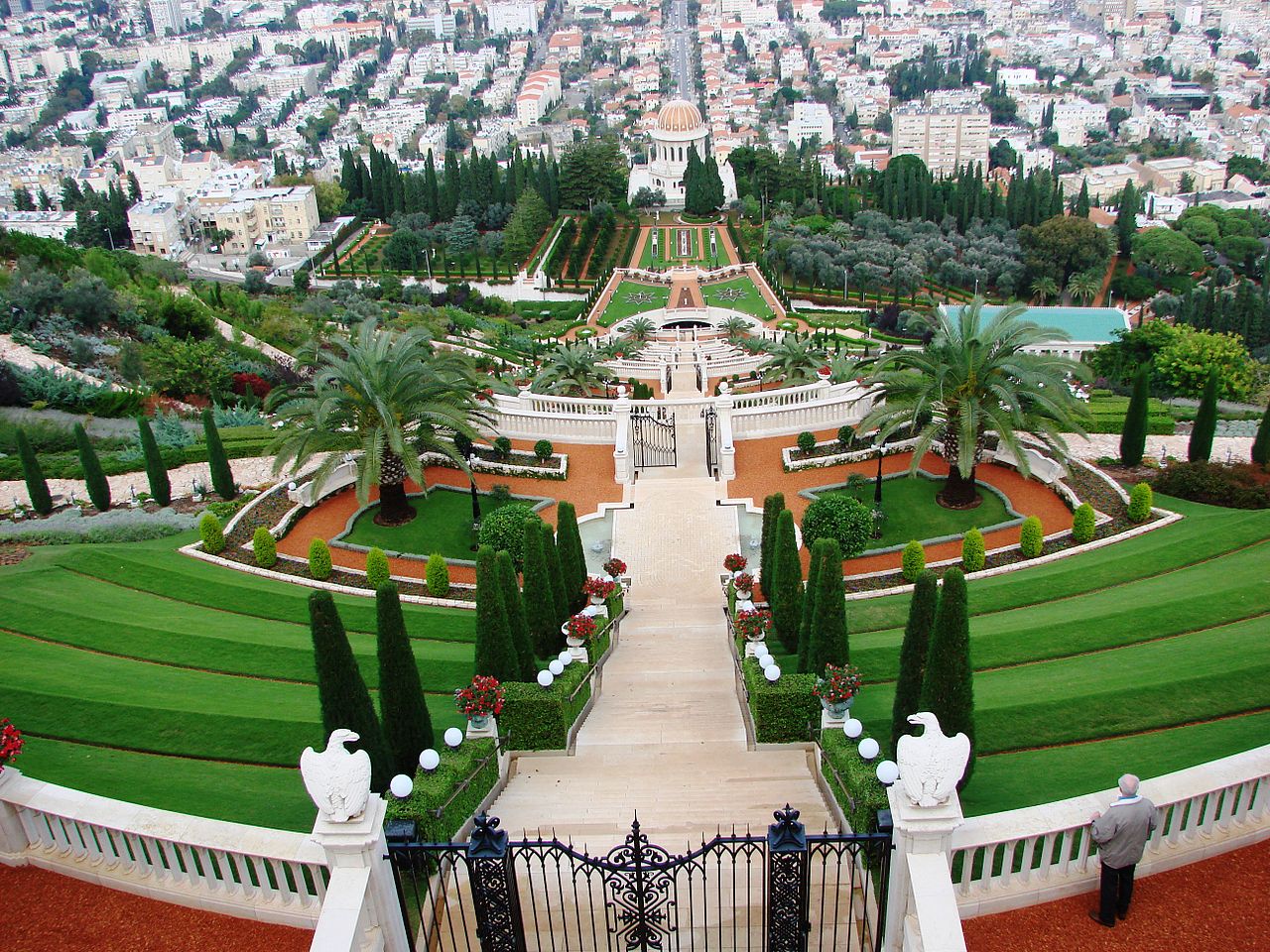
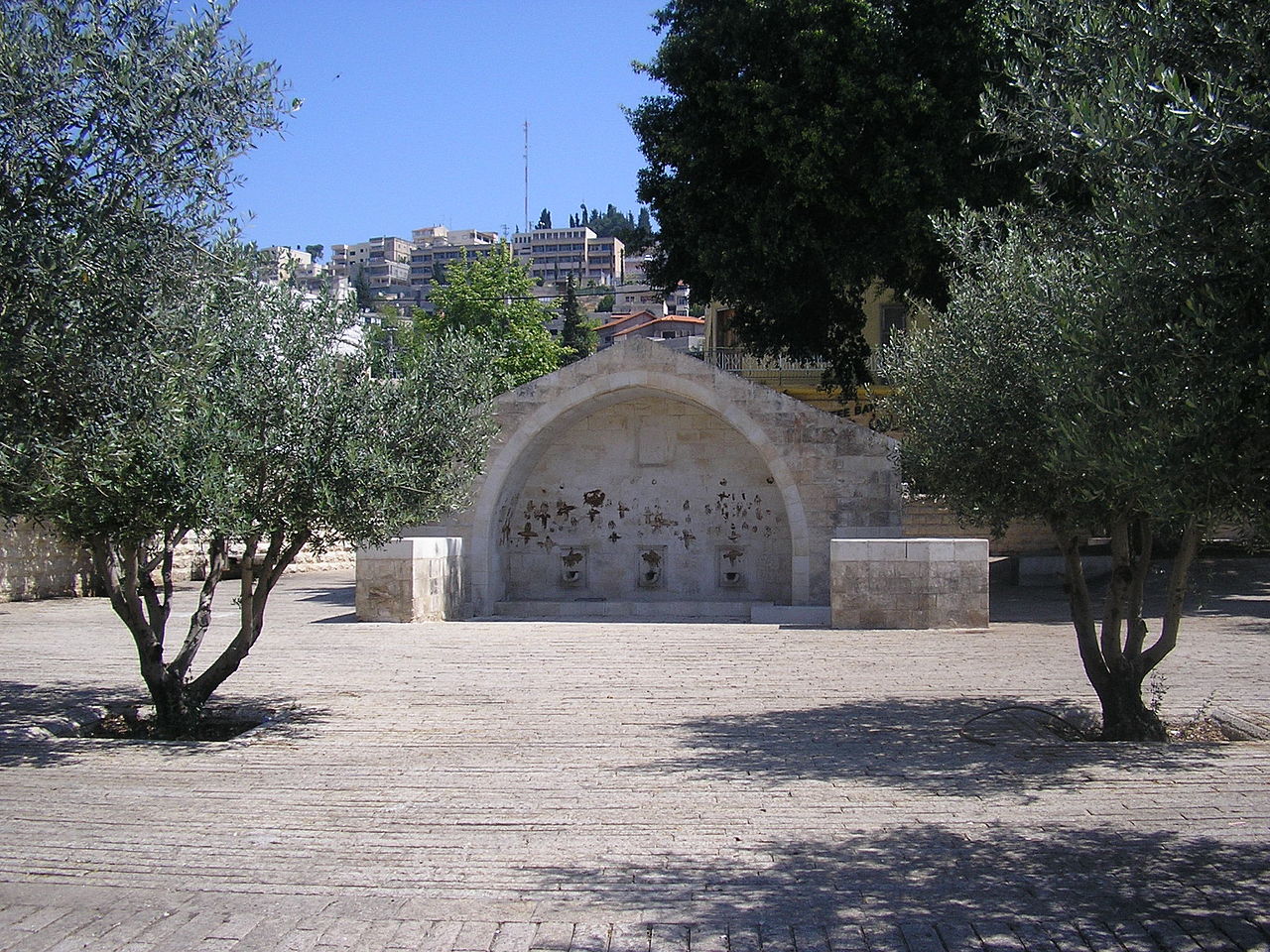
Posted October 15, 2015
